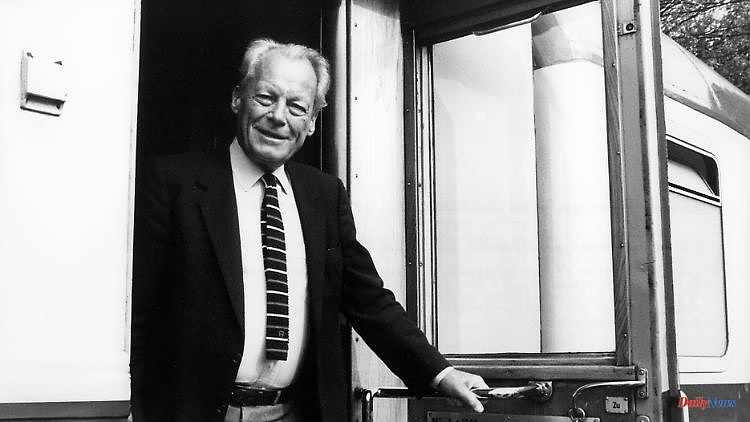In the Ahr valley south of the old seat of government Bonn, the federal government maintained a bunker for a long time as a place of refuge in the event of war. Since the early 1960s, however, it had been clear that it would not withstand a nuclear attack. As an alternative, Willy Brandt considered "mobilizing" the government on trains.
Half a century ago, the federal government also considered withdrawing to trains on tracks instead of to their bunker in the Ahr valley in the event of war. The background was the fear of an electronics blackout in the government bunker. This emerges from federal government files in the Federal Archives. Accordingly, in 1971 the then Chancellor, Willy Brandt, commissioned an investigation called "Gewitter", which dealt with "new knowledge of the effects of the electromagnetic pulse (EMP) occurring in nuclear weapon explosions".
Jörg Diester, author of several books about the government bunker, which has since been abandoned and partially turned into a museum, explains that "Gewitter" marked a turning point in Germany's defense strategy. In the Brandt era, a clear distancing from the government bunker could be observed. "Never again did the complex regain the importance it was originally intended for."
In 1971, the Federal Ministry of the Interior wrote in a draft for "Gewitter" that the construction of "a new command post" instead of the Ahr bunker south of Bonn should be aimed at. Until then, there should be interim solutions: "Move the BReg (Federal Government) in four trains and expand the protected parts of the Kusel barracks as additional permanent accommodation for the mobile BReg." However, studies commissioned as a result did not consider escape on trains and to what was then the Kusel barracks in south-western Rhineland-Palatinate to be impractical.
According to Diester, there was no longer any mention of a new government bunker in the files later. But even the existing shelter in two former railway tunnels under vineyards was technically outdated when it was finally completed in 1971: As early as 1962, experts had expected nuclear weapons to be far more powerful than the Hiroshima bomb - far too many for the bunker.
With a view to questions on these topics, the Federal Ministry of the Interior informed the dpa that documents from the federal administration at the time that were of lasting value are now in the Federal Archives. They can be viewed there as long as they are no longer subject to secrecy. The federal government's plans to flee in the 1970s are thus neither confirmed nor denied by the ministry.
According to Diester, there were even media reports "that in the event of a crisis, the federal government should also be flown out with Lufthansa to an alternative seat in Orlando, Florida." So far, however, he has not discovered any evidence of this in the Federal Archives. The Federal Ministry of the Interior does not comment on this on request.
According to the ministry, a present-day war can mean that federal authorities "relocate to another, more protected place and that official business is also carried out in specially protected rooms for a short period of time". The Federal Ministry of the Interior, for example, because of its "prominent coordination tasks" operates not only a "24/7 situation center but also its own IT infrastructure that is particularly secured in terms of availability and has upgraded a property as an alternative seat". The Federal Ministry of the Interior did not provide any further information.
(This article was first published on Sunday, March 05, 2023.)












